Philips 9710M/01
With a special thanks to Atanas Milchev for submitting his nice pair of 9710M/01
Philips 9710M/01 is one of the most popular vintage fullrange loudspeakers. They were designed for studio monitoring equipment as well as for domestic hi-fi applications. It was used in many speaker systems form seventies like Philips Studio Monitor 8, Sonab V1, Sonab OA5.
A close view of the cone shows a long-fiber paper. A
manufacturer's number 2103 is stamped on the cone. The surround
is "accordion" type without coating.
There is another version of this driver with a coated surround.
The coating seems to keep its flexibility trough the passing
decades and the T/S parameters of both versions are similar.
There is not separate dust cap - the cone has no opening at its
center, which increases the rigidity of its construction.
The gasket is made of cork and sometimes is painted black.
The magnet system
features AlNiCo magnet and a special shape center pole piece
with a copper cap.
Unlike the later ferrite magnet
version, the 9710M/01 has underhung magnet system with 11mm
thick front pole piece and 8mm voice coil, so the linear
excursion is Xmax = ± 1.5mm.
The voice coil is copper ant it is wounded on a paper former.
The unit was assembled with three bolts made of non-magnetic
material.
The chassis is attached to the magnet system by three screws on
its side and can be easily removed.
This is the manufacturer's brochure of the ferrite version
9710/M8 ![]()
My Measurements
| Driver Properties | Thiele - Small Parameters | ||||
|---|---|---|---|---|---|
| Chassis material | Stamped Steel | Parameter | Measured | Datasheet | |
| Membrane material | Paper | Fs | 47 Hz | 50 Hz | |
| Magnet System | AlNiCo | Re | 5.0 Ω | 6.4 Ω | |
| Surround | Paper | Qms | 2.4 | N/A | |
| Voice Coil Diameter | 35 mm | Qes | 0.58 | N/A | |
| Nominal Impedance | 8 Ω | Qts | 0.46 | N/A | |
| Sensitivity | 94 dB/W/m | Vas | 60 ltr | N/A | |
| Rated Power | 10W | Le | 0.09 mH | N/A | |
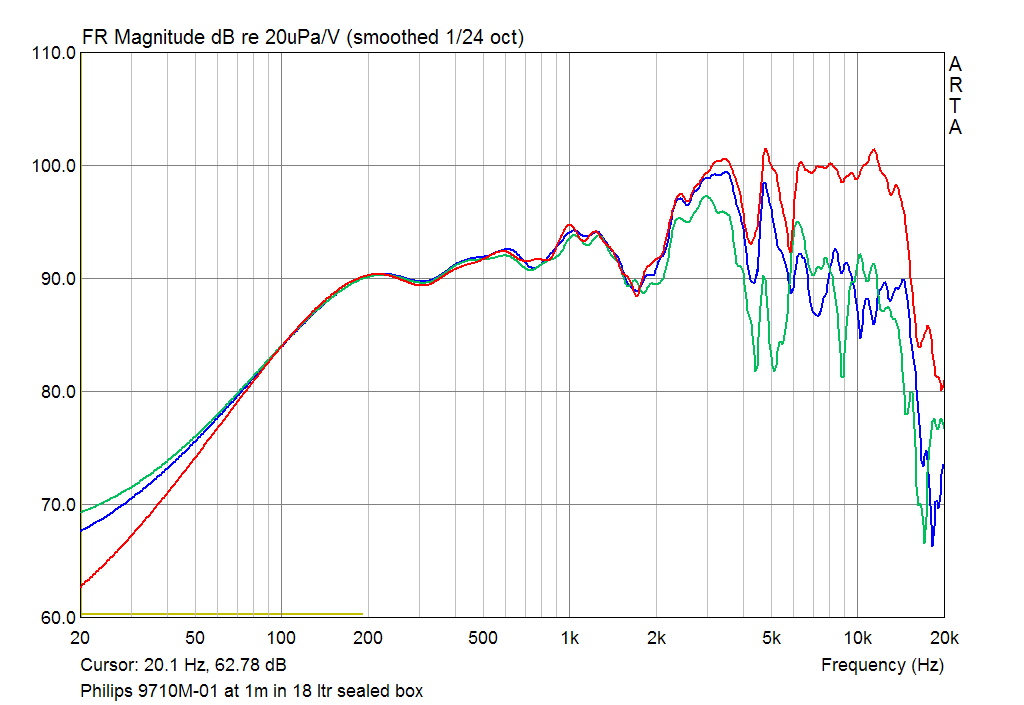
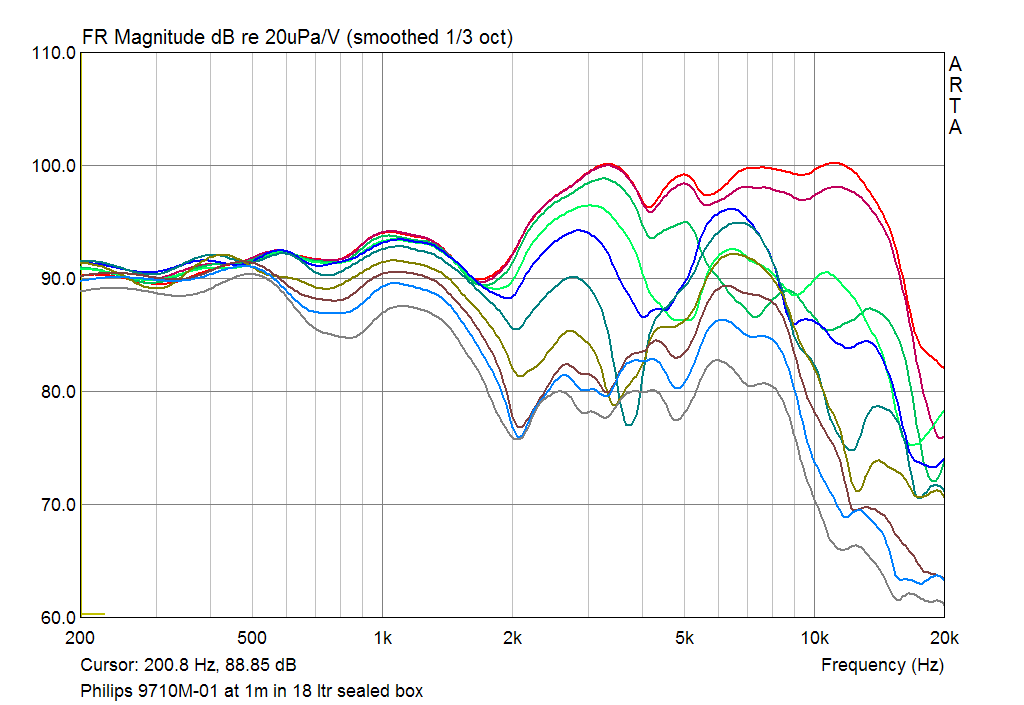
On left - frequency response at 1m with 2.83 V input RED - on axis, BLUE - 15 º off axis, GREEN - 30 º off axis
On right - frequency response smoothed at 1/3 Oct at 0-90º of axis
wit a step of 10º
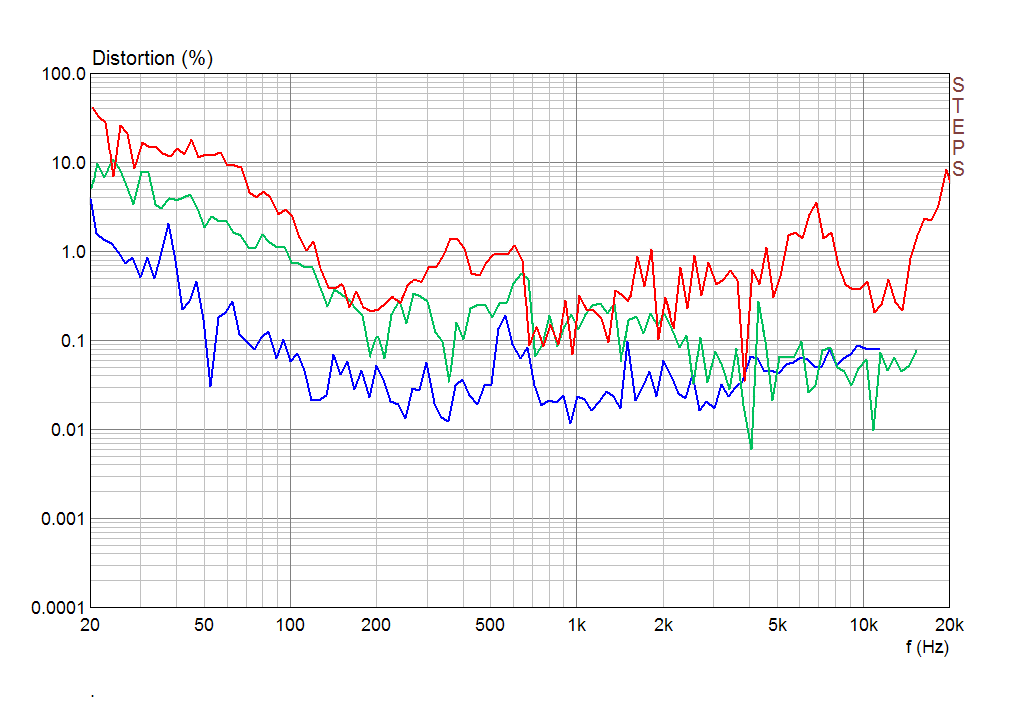
The second, third and fourth harmonic curves measured at 2.83V input RMS.
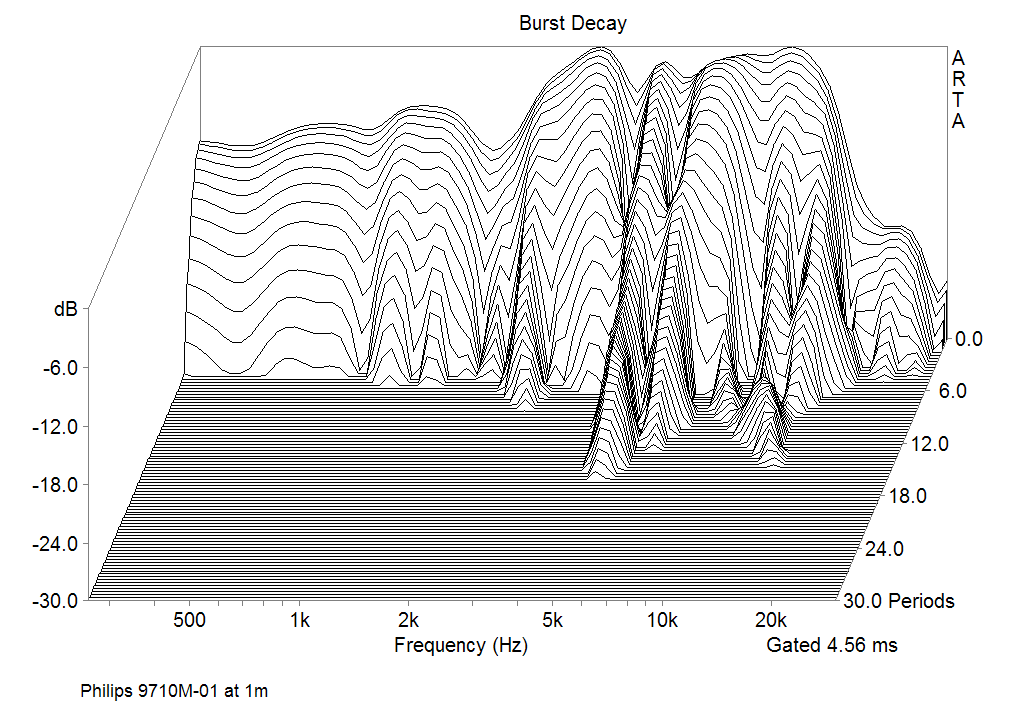
Burst decay response, measured at 1m on axis
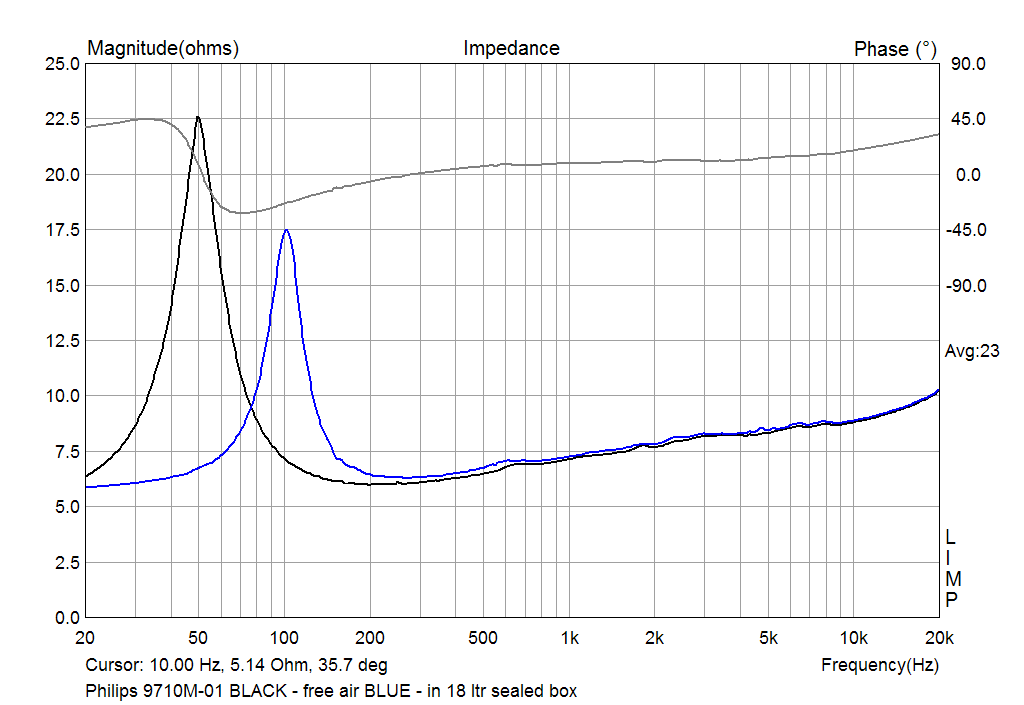
The impedance curve in 18 ltr sealed box
I always feel timidity for any modifications of a vintage
speakers, especially when they were designed by talented
engineers
However in the case with Philips 9710 an easy and non-disruptive
improvement can be done. In the SPL graph, we can see a sequence
of significant peaks and dips in the range of 3-6 kHz. The
second harmonic increases in the same range, as is shown in the
THD graph. For this behavior I suspected the mutual disposition
between the basic and whizzer cones, which are, for my opinion,
placed very close which causes an interference in the mentioned
range.
The solution is very simple - a tape of open-cell foam material
with 8X8mm cut, placed between two cones. The whizzer cone has
an angled age, so no gluing is necessary. The result is shown
below.
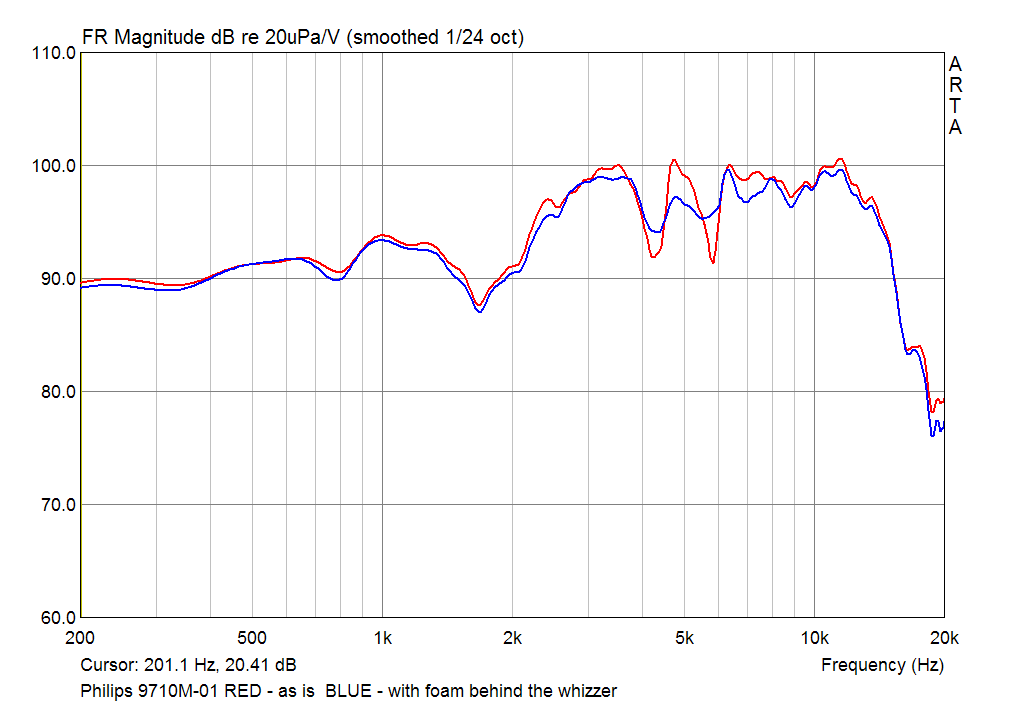
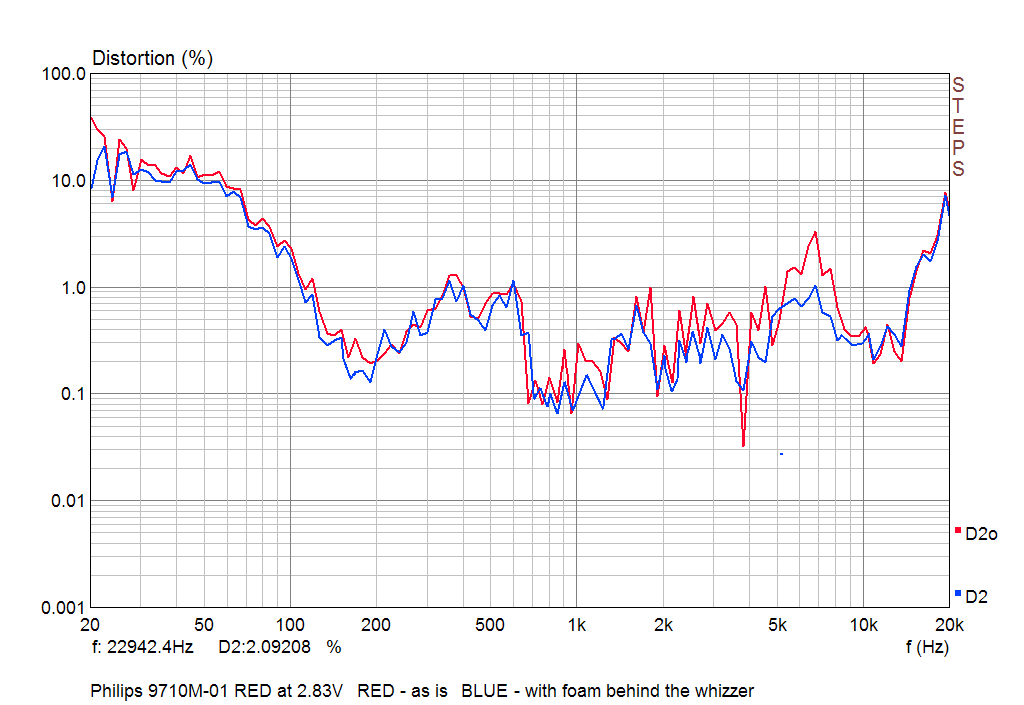
The result of the cheap trick described above. The SPL between 3KHz and 6KHz was significantly improved, The second harmonic in the same region was decreased up to three times. And the most important - the listening tests show more clear and accurate sound image, specially in female vocals and string instruments, compared to the unmodified speaker.
Conclusion
The 9710M/01 was designed for bassreflex boxes. We can see it
in various DIY constructions - open baffles, TL and even horn
enclosures. Although the response falls abruptly after 17 kHz
listeners don't notice a lack of trebles. Any attempts to
equalize the response using passive crossover circuits cause a
lack of detail and a dull overall performance.
I tried it with various amplifiers, but surprisingly the best
result I got with a simple EL84 UL push-pull.

